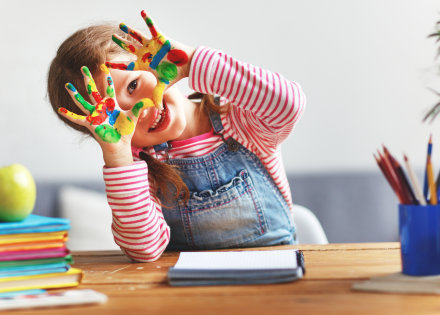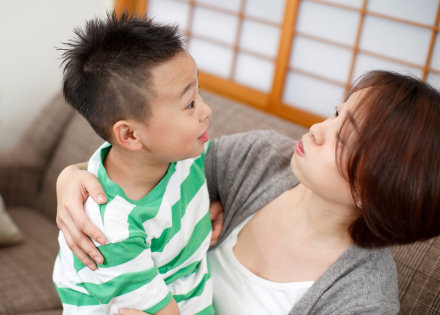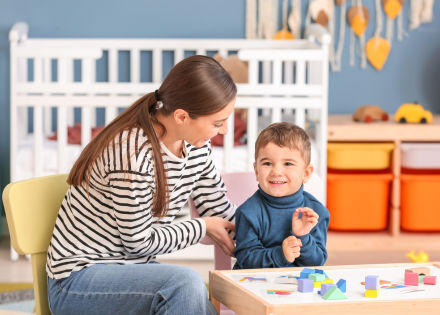Joint attention plays a vital role in developing social and communication skills. Understanding what joint attention involves and its significance provides important insights, especially for parents of children with developmental delays or conditions like autism spectrum disorder.

What Is Joint Attention?
Joint attention is a behaviour where two people share a focus on an object or event. This interaction is crucial for better social engagement and communication skills. Skills like gaining, maintaining, and shifting attention are developed using techniques such as referencing others, gestures, and vocalisations aiming to improve social communication and cognitive development.
Paying attention to things together with others, from infants to adults, is a vital social skill. It helps in sharing experiences, coordinating thoughts and actions, and collaborating effectively. This skill lays the foundation for early language learning and proficiency in social interactions.
This skill starts to develop around 5 months of age and involves various parts of the brain working together[1]. Joint attention is essential as it helps develop vital social skills and an understanding of others’ perspectives.

Initiating Joint Attention
This happens when someone takes the lead in starting social interaction. For example, a child pointing to a toy to get their caregiver’s attention shows social motivation. Initiating is a harder skill to learn than responding, however it can be taught.
Responding to Joint Attention
In this situation, the child responds to someone else’s efforts to establish joint attention. For example a parent points to a bird in a tree and says ‘look, it’s a bird’. The child follows the parents gaze and also points in the direction of the bird.
In a study using eye-tracking technology, researchers observed babies aged 10 to 18 months—a critical phase for social development. The findings revealed that infants later diagnosed with ASD showed lower rates of initiating joint attention compared to the comparison groups. Interestingly, there were no significant differences in their ability to respond to joint attention cues [5].
How Does Joint Attention Impact Children With ASD?
A 2021 paper points out that having trouble with joint attention is seen as an early sign of autism spectrum disorder (ASD)[2]. This means that some individuals with ASD might find it hard to focus on what others are paying attention to.
Not being able to pay attention to others can make it tough for people to connect with others, maintain relationships, and understand what others are thinking and feeling.
Joint Visual Attention
There are three types of joint attention: Basic Joint Attention, Associated Joint Attention, and Joint Visual Attention[3]. At the age of 24 months, kids with ASD show less joint attention compared to other kids. At this age, how much joint attention a child shows is connected to their overall development and how many traits of autism they have.
Surprisingly, by the time they’re 42 months old, these connections between joint attention and development or autistic traits disappear. Even though children with ASD show less joint attention at 24 months, they catch up to the same level as other kids by 42 months, except for Joint Visual Attention. This suggests that difficulties with Joint Visual Attention might be an important early sign of ASD.
Joint Attention & Smiling
Another study found that when infants try to get your attention without smiling, it’s a strong sign that they might later show more severe behavioural traits related to Autism Spectrum Disorder (ASD), especially if they have a higher risk of developing ASD due to having siblings with the condition [4].

Why Is Joint Attention Of Importance For Children With ASD?
Joint attention is crucial for children with Autism Spectrum Disorder (ASD) because it serves as a focal point for therapeutic intervention. Interventions specifically designed to enhance joint attention behaviours in children with ASD have demonstrated positive outcomes.
According to studies conducted by Murza, Schwartz, Hahs-vaughn, and Nye in 2016, interventions targeted at joint attention not only improve this behaviour but also yield additional benefits [1]. Benefits include improved social skills, adaptive behaviours and language.
How Behaviour Analysis Can Improve Joint Attention?
Applied Behaviour Analysis (ABA) based therapy is a proven method focused on improving socially significant behaviours, including the development of joint attention. Therapists and caregivers play crucial roles in helping children develop joint attention skills, using ABA techniques.
Children with autism may find it challenging to develop joint attention skills, affecting their ability to interact while focusing on both an object and a person. ABA addresses these challenges with specific techniques, such as orienting to a social partner and sharing emotional states.

How To Help Children Develop Joint Attention
1. Focus on Faces and Eye Contact
Encouraging your child to look at you, as eye contact provides important social cues. Making eye contact may be difficult for those with ASD, so consider the appropriateness of setting this goal for your child. If making eye contact makes the child or person uncomfortable, other alternative goals can be identified that will help achieve similar results.
2. Play and Turn-Taking
Engaging in play activities that promote turn-taking, gradually increasing time spent in joint attention activities. Collaborative efforts, like completing puzzles or crafts, enhance shared attention.
Boost a child’s attention skills by guiding them through tasks. For example, have them find a toy hidden in envelopes on a wall. This enhances their ability to pay attention to their surroundings [5].
3. Animated Communication
Using an animated tone of voice, gestures, and facial expressions to capture and maintain attention, particularly helpful for those facing challenges in joint attention.
Help reinforce your child’s behaviour by using nods and smiles as rewards when they follow your cues. This trains them to find social signals engaging and rewarding [5].
4. Tailor Activities to Individual Interests
Incorporating items or activities aligned with the individual’s preferences enhances engagement and motivation during joint attention exercises. This will help you to encourage your child to move from what they are playing with to showing interest in what you are doing.

Conclusion
Joint attention is crucial for boosting social and communication skills, especially in individuals with developmental delays or autism spectrum disorder (ASD). It involves shared focus on objects by engaging in behaviours such as referencing others, eye contact and gestures.
Initiating and responding to joint attention are vital in social development, with difficulties in initiating being an early sign of ASD. Effective interventions, like Applied Behavior Analysis (ABA) based therapy, improve joint attention, social skills, and reduce behaviours of concern.
ABA based therapy focuses on critical behaviours, aiding positive developments in joint attention. Strategies to support children include encouraging eye contact, fostering turn-taking, using animated communication, and tailoring activities to their interests. These approaches enhance connections and overall well-being in children with joint attention challenges.
Sources:
- A review of joint attention and social-cognitive brain systems in typical development and autism spectrum disorder
- Joint attention and intelligence in children with autism spectrum disorder without severe intellectual disability
- Joint attention development in toddlers with autism
- Joint Attention Initiation With and Without Positive Affect: Risk Group Differences and Associations with ASD Symptoms
- An Operant Analysis of Joint Attention Skills
